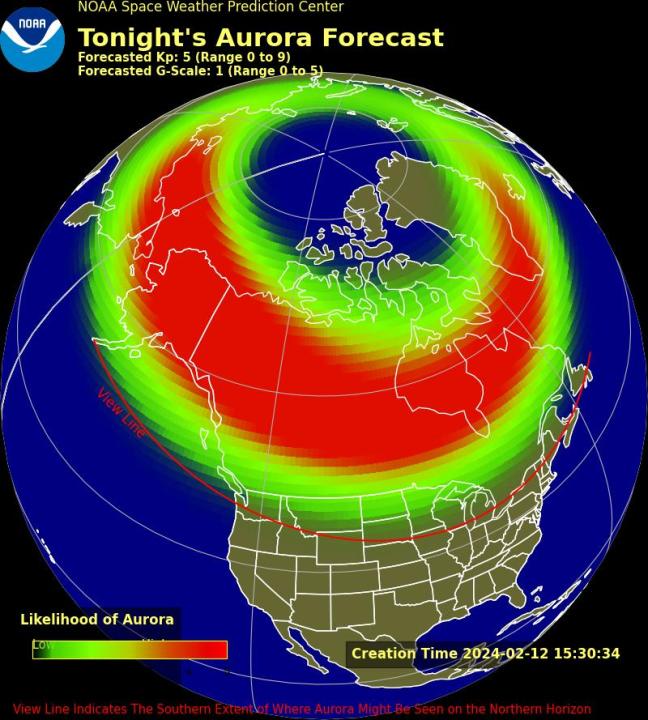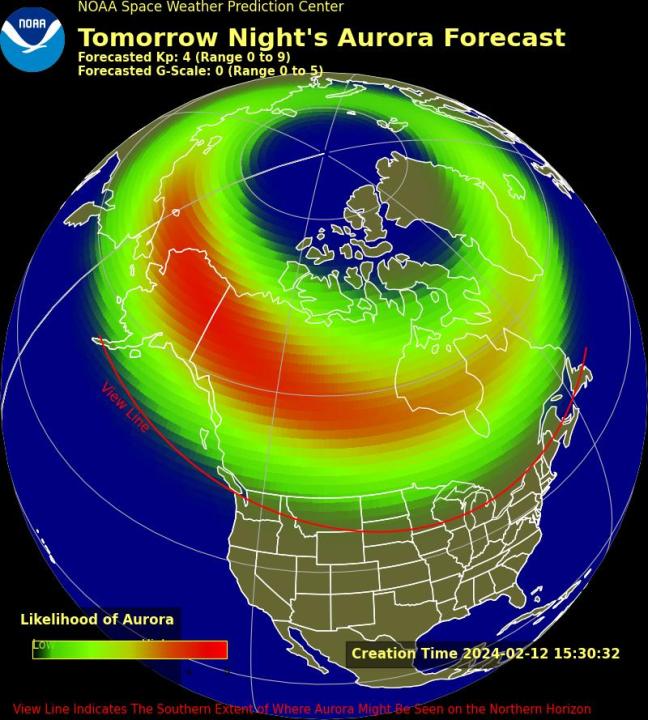(NEXSTAR) — The sun has been active over the last few days, prompting solar radiation events, a strong flare event, and now, multiple coronal mass ejections (CMEs), which could bring the northern lights to part of the U.S. this week.
As overwhelming as those terms may sound, these are normal activities for the sun, especially during the phase it’s in now: Solar Cycle 25.
Solar cycles are 11-year periods when the sun flips its magnetic poles, sparking space weather such as flares and CMEs, which are explosions of plasma and magnetic material from the sun that can reach Earth in as little as 15 to 18 hours, NOAA explains. NOAA’s Space Weather Prediction Center (SWPC) reported last month that we’re nearing the peak of the current solar cycle.
As part of that, we can expect to see the activities the SWPC has been monitoring over the last few days. Last week, the SWPC detected multiple flares on the sun, which can impact those using high-frequency radio signals though doesn’t largely impact the general public.
On Friday, the SWPC reported a minor solar radiation storm event, which the agency warned is “not unusual” and only brought minor impacts to those using high-frequency radios and “possible slight risk to space launch.” Later that day, the agency reported a polar cap absorption (PCA) event was underway that, again, only posed a possible impact to those using high-frequency communication in the polar regions.
On Sunday, the SWPC issued a geomagnetic storm watch that will last through Wednesday due to the chance that “multiple CMEs may arrive at Earth and lead to increased geomagnetic activity.”
According to NASA, CMEs can create currents in Earth’s magnetic fields that send particles to the North and South Poles. When those particles interact with oxygen and nitrogen, they can create northern lights.
“It’s essentially the sun shooting a magnet out into space,” Bill Murtagh, program coordinator for the SWPC and seasoned space weather forecaster, previously told Nexstar. “That magnet impacts Earth’s magnetic field and we get this big interaction.”
That interaction is known as a geomagnetic storm. The strength of the storm will impact how far south the northern lights will be visible.
To signify the strength of geomagnetic storms, the SWPC uses a 5-point scale. At the lowest end is G1, which is described as minor storms that can lead to aurora being visible in Maine and Michigan’s Upper Peninsula. A G5 storm, described as extreme, could send the northern lights into the southern U.S.
Through Wednesday, the SWPC says, CMEs are likely to cause G1 to G2-level geomagnetic storm conditions. These aren’t uncommon: a G2 moderate geomagnetic storm impacted Earth last month after an eruption of solar material was detected.
While there are no concerns to the general public when it comes to these storms, there is a chance for those in the northern portions of the U.S. to see the northern lights.
Based on the current forecasting from the SWPC, it seems the best chance for the northern U.S. to catch the aurora is Monday night. The map on the left below shows Monday’s forecast. Areas in red have the greatest likelihood of seeing the aurora, while those in the green have the lowest likelihood. Those living as far south as the red line on the map still have the possibility of seeing the northern lights if they look toward the northern horizon.


Alaska and much of Canada have the greatest chance of seeing the aurora on both Monday and Tuesday, as they usually do thanks to their proximity to the North Pole. Fourteen states are at or above the view line, meaning they do have at least a slim chance of seeing the aurora Monday. Those states include Washington, Idaho, Montana, Wyoming, North Dakota, South Dakota, Minnesota, northern Iowa, Wisconsin, Michigan, New York, Vermont, New Hampshire, and Maine.
Tuesday’s forecast, seen on the map to the right above, shows the likelihood of the aurora lighting up the night sky is slimmer, even for Alaska and Canada. Some northern states could, however, still get a glimpse at the northern lights. States at or above the view line include Washington, Idaho, Montana, North Dakota, South Dakota, Minnesota, Wisconsin, Michigan, and northern Maine.
As you can tell, the further north you are, the greater chance you have of seeing the aurora when it glows.
If you live further south, say in Texas or Florida, you’ll need a much stronger geomagnetic storm event to have a chance at the northern lights.
According to the SWPC’s scale, a minor G1 storm leads to aurora commonly being visible in Maine and Michigan’s Upper Peninsula. A moderate G2 storm can bring the northern lights slightly southward into New York and Idaho.
When a storm reaches G3 status, the aurora can be viewed as far south as Illinois and Oregon. Should it reach G4 strength, those living in Alabama and northern California may have a chance at seeing the northern lights. Solar activity that causes a G5 storm, the highest possible on SWPC’s scale, has been known to make aurora appear in Florida and even southern Texas.
If you live in a southern state such as Florida, Texas, or even Hawaii, in addition to a G4 or G5 storm, you’ll also need a few other pieces to align perfectly, according to Murtagh. That includes the storm impacting Earth around 8 or 9 p.m. (so you can actually see the lights), a clear sky, and a view away from light pollution caused by cities and towns.
More severe geomagnetic storms are rarer, though. A G1 storm, for example, can happen 1,700 times per solar cycle (more on that later), or about 900 days per 11 years. A G5 strength storm may only happen about four times during a solar cycle.
Copyright 2024 Nexstar Media Inc. All rights reserved. This material may not be published, broadcast, rewritten, or redistributed.














